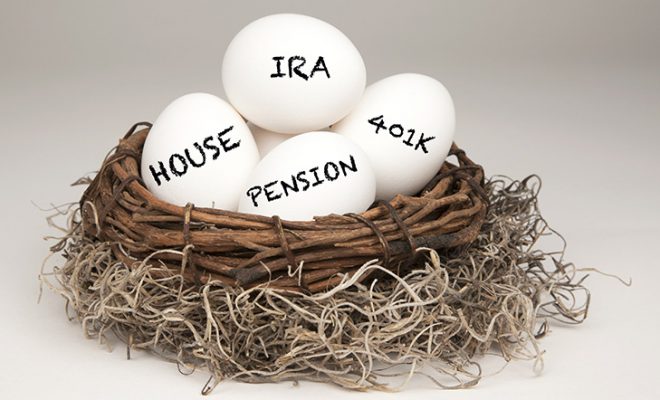Actionable Strategies to Make Your Retirement Assets Last Longer

The importance of retirement planning cannot be stressed upon enough. Considering the increase in the number of centenarians in America, a person who retires at the age of 60, may have another 30-40 years of living without an income. Moreover, women generally live longer than men, adding some more years to their retirement.
You must not only save for retirement but also strategize the use of your retirement funds optimally. Finding a secondary source of income in retirement can be hard. Sometimes your health and age may not permit you to work. Most people aim to save $1,00,000 in retirement funds. These $1,00,000 may be all that you have for the next 30-40 years. Imagine spending all of it in your early years of retirement and being left with nothing later.
If you are worried about running out of funds during your post-retired life, here are some actionable strategies to make your retirement assets last longer.
Table of Contents
9 Actionable strategies to make your retirement assets last longer
1. Delay your retirement
70s are the new 60s. If you retire in your 70s, you have another 10 years of a steady income and more time to save up for retirement. If you don’t want to wait as many years to retire, you can consider working part-time for a few years. You will not be earning as much from a part-time job, but it is still enough to delay tapping into your retirement fund. A part-time job routine also gives you a glimpse of a post- retirement life and makes the transition easy. Such jobs are not as demanding, and some people continue them well into their retirement years. It is a good way to keep the money flowing in. However, having a job may affect your Social Security benefits. It is good to consider all these aspects and then take a decision.
2. Downsizing the house
Most retired people live alone or with their spouse. Downsizing the house translates to fewer costs of maintenance, less energy and time. You can use the money from the sale of the bigger house as a financial cushion for other expenses. However, keep a note of expenses that come with shifting to a new house. The aim is to make a profit and not to end up spending more.
3. Delay Social Security Benefits
As per regulations, you can start claiming Social Security benefits from the age of 62. However, if you delay claiming your Social Security to the age of 70, you get an 8% increased annual payout. If you are healthy and can work a few more years, it is a good idea to delay claiming these benefits. However, keep in mind that these extra credits are only applicable up to the age of 70, so you should not postpone any further.
4. Set a budget
It is a myth that people spend less post retirement. You will be surprised to know that almost 50% of retirees spend more than they did when they were working. While you may not have to spend on commuting to work daily, you do have newer expenses such as those related to your health. It is wise to set up a monthly budget and try to stick to it.
5. Live in an affordable city
Picking out the right city and state to live in after retirement is a very important decision. Many states offer different tax benefits to retirees. Pick a city that offers affordable and accessible healthcare and community benefits. Every year, several studies are conducted to determine the most expensive and affordable states to live in. Keep yourself updated with these figures so you can take the right call.
6. Pick Roth accounts over others
Unlike other retirement accounts, Roth IRA and Roth 401 (k) not only let your money grow tax-free, but also allow you to make tax-free withdrawals. Another benefit of a Roth IRA account is that you are not forced to withdraw required minimum distributions (RMD). Other retirement accounts have a mandatory RMD withdrawal after the age of 70 ½. With a Roth IRA, your money can grow tax-free until you need it.
7. Plan your RMDs
If you do have retirement accounts that require you to make RMD withdrawals after the age of 70 ½, make sure to plan these amounts well in advance. Calculate how much you need for retirement and ascertain the percentage of these funds that you should be withdrawing each year. Don’t rely on common misconceptions like, ‘’You must withdraw 4% of your retirement fund each year”. There is so fixed number for everyone. Calculate your RMDs based on your current financial status and family medical history.
8. Invest in stocks
Most retirees withdraw their money from stocks thinking they are very risky. While the risk is high, so are the returns. Investing in stocks can be a brilliant way to earn more money even in retirement. Make sure to study the market and seek help from a financial advisor before making decisions. Small and well calculated risks have the potential to bring in huge profits. Don’t shy away from stock market investing.
9. Enroll in a Health Savings Account (HSA)
If you do not already have Medicare, you can pair up your health insurance plan with an HSA. HSAs are tax-deferred accounts. In fact, the withdrawals are absolutely tax-free as long as they are used for healthcare expenses. Healthcare is a major expense for retirees and an HSA can help cover some of those costs.
To sum it up
Don’t undermine your expenses post retirement. Healthcare, children’s education or marriage, etc. can bring in unexpected expenditure. As long as you plan things right, you can easily cover most of these. It is important to spread out your retirement fund over the future years in a wise manner. Be disciplined while for saving for your retirement and cautious while spending that money – you can then ensure a happy and a financially secure retired life.
Are you facing difficulties while planning for your retirement? Reach out to financial advisors. Their expertise can ease your retirement planning process.
















